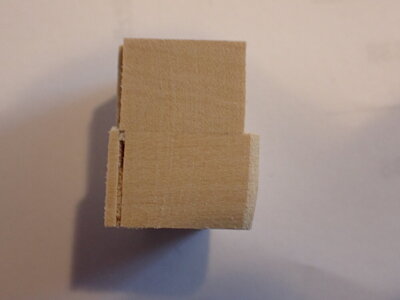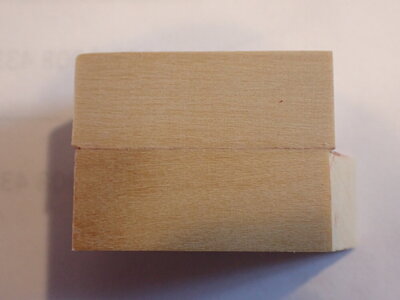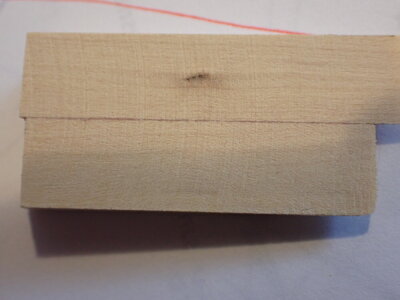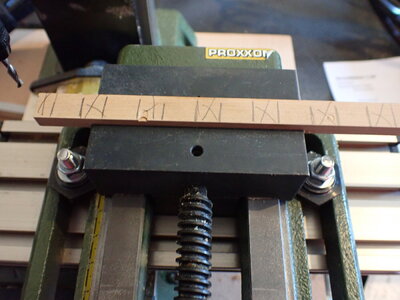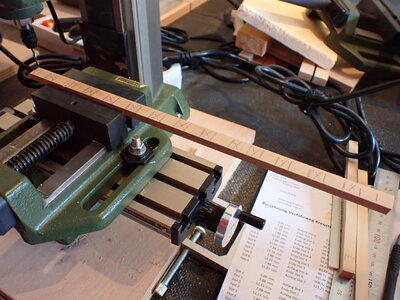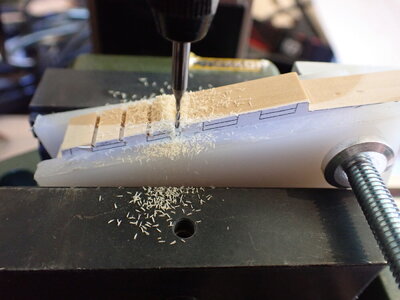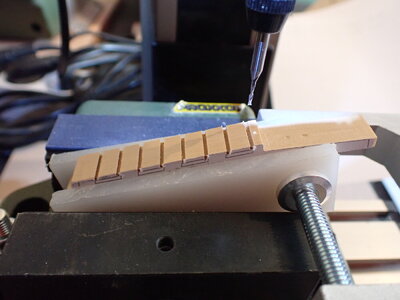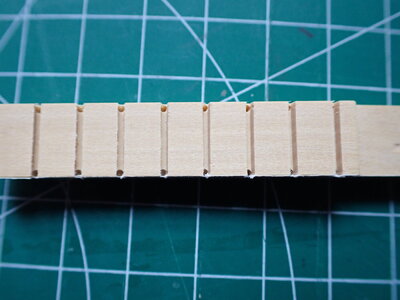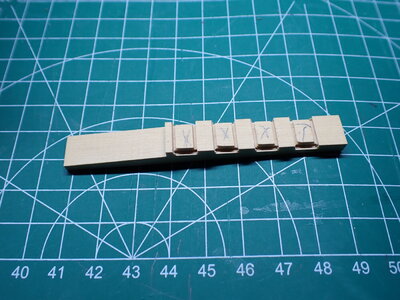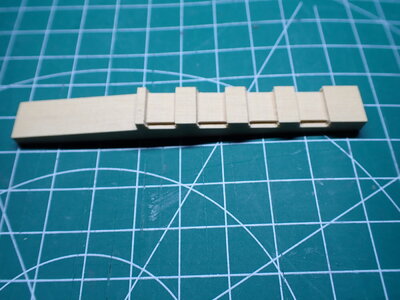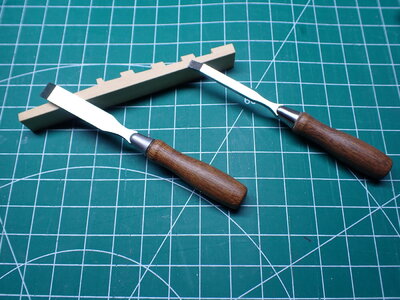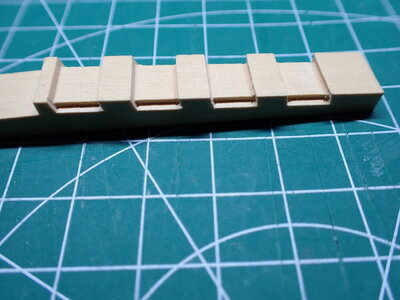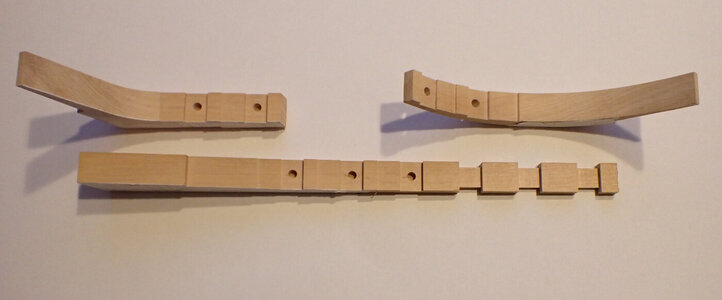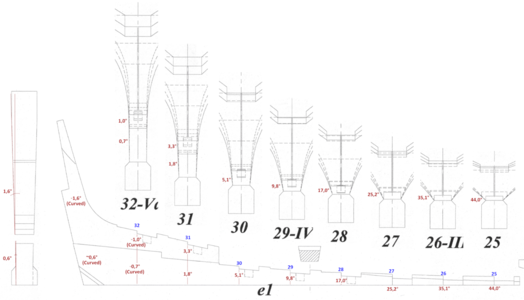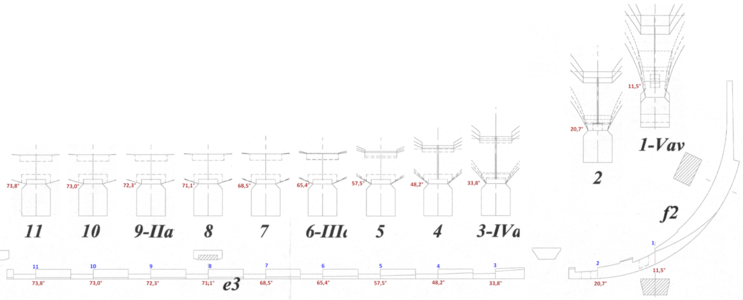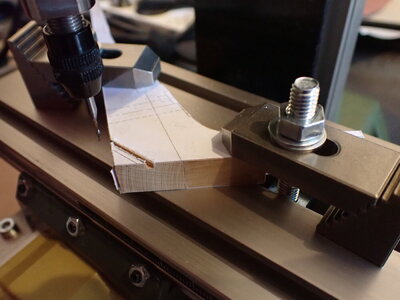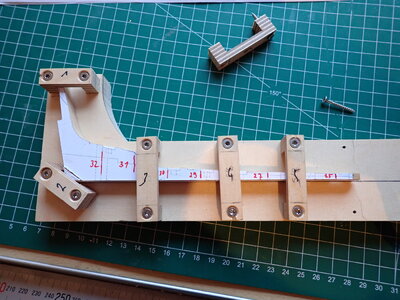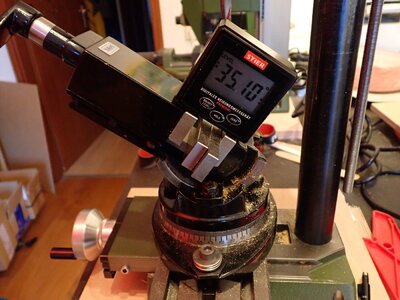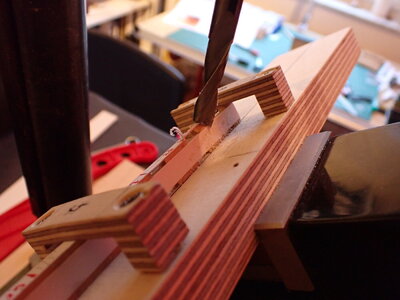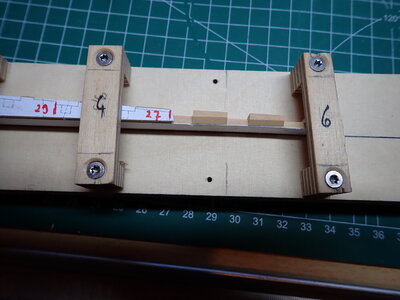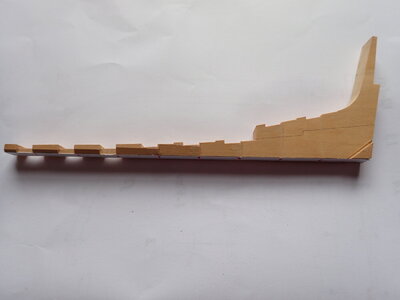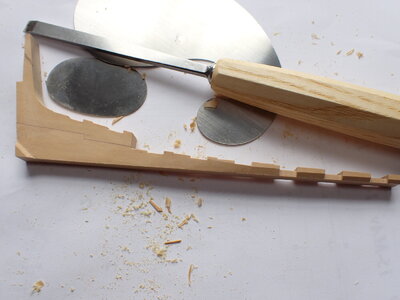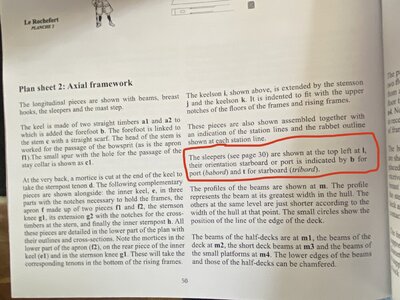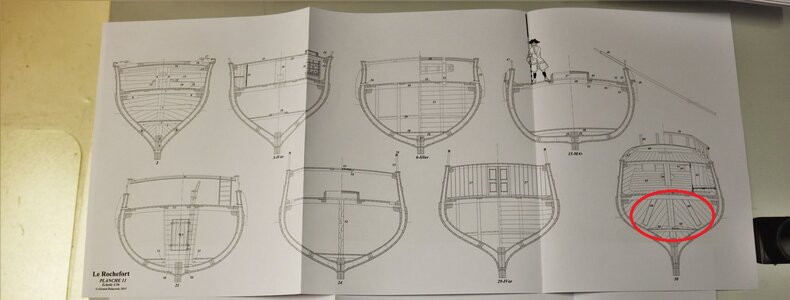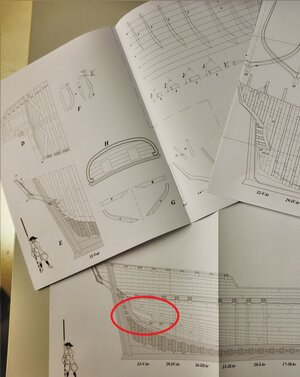I started detailing the first parts. For me as a newbie it took some time and I also needed to make some of them 2 or 3 times  until I was satisfied.
until I was satisfied.
The next step is to continue with the outer shape of the different parts.
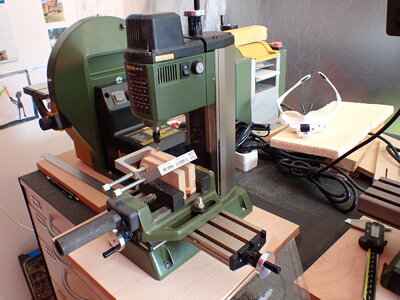
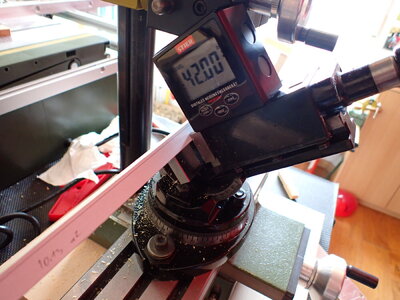
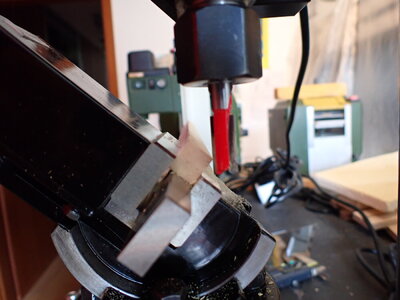
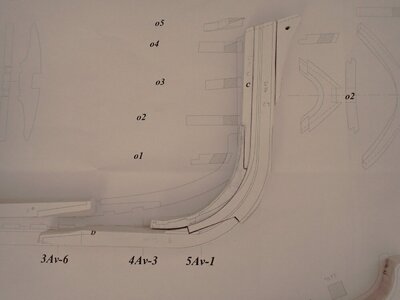
The next challenge after sanding the outer shape will be the rabbet. And I'm really scared about this task.
For a better understanding I marked the shape of the rabbet with three colors in the plan: Red, yellow and blue.
Green are the different parts of the keel.
At least I now understood the different lines
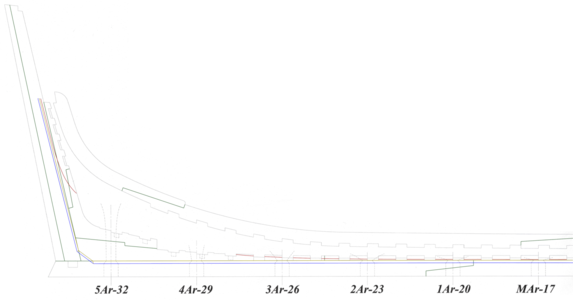

The next step is to continue with the outer shape of the different parts.




The next challenge after sanding the outer shape will be the rabbet. And I'm really scared about this task.
For a better understanding I marked the shape of the rabbet with three colors in the plan: Red, yellow and blue.
Green are the different parts of the keel.
At least I now understood the different lines









